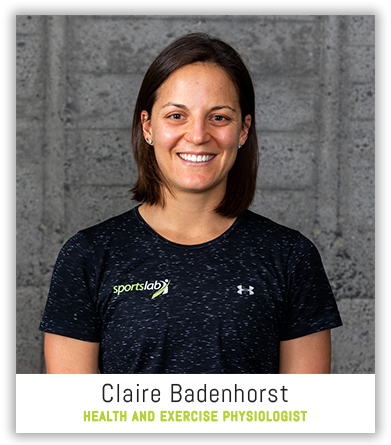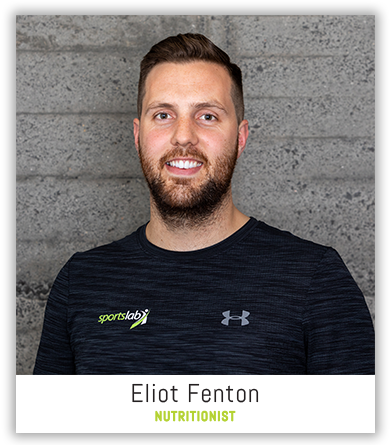Redefining Health: Take a Step Back and See The Bigger Picture
Last blog, we decided to set you and ourselves a challenge! If you have had a look at your Instagram feed lately, you will see that we are pretty much doing what everyone else is – we are setting you a health challenge, but we promise we won’t make you do 20 burpees while reading this blog (well maybe at the end to see if you read it all the way from start to finish).
The challenge for you is to take responsibility for your health and put in place preventive health practices to help you optimise yourself every day.
Our challenge (myself, Eliot and Lab Crew) is to provide you with up-to-date, credible knowledge that will allow you to make the best decisions and implement the best practices for YOU and your health!
We believe that, in order to make the best decisions about your health you need to understand your body. Let’s take a step back and look at the bigger picture and what is recommended now for health.
Claire:
Whenever I look at defining or trying to understand health, I am of course going to come from a physiological perspective. Physiology is the study of HOW the human body functions at a cellular level right through to the whole body with all our various systems integrated and working with one another. Effectively we are taking our understanding of anatomy and combining it with an understanding on how each of our body systems work to maintain ‘homeostasis’, the optimal state of functioning for our bodies.
When we teach anatomy we will talk about the heart, or the lungs, and we may describe in detail the structure and function of each of these and how they independently carry out their function. Yet viewing them independently is far too simplistic, and not everything is ‘black and white’, or ‘yes and no’. The human body is a wonderfully dynamic system, so our lungs may work to bring air into our body but without the heart and the blood vessels working properly we would not be able to get oxygen around the body to the muscles.
If we were to discuss metabolism or how we produce energy (energy for normal everyday activities and exercise) from food we eat, then we would talk about anaerobic and aerobic metabolism, or how we can break down fat and carbohydrates to provide that energy. But what is important to remember is that our ability to produce energy from fat and carbohydrates is based on a spectrum (using mainly fat at rest and carbohydrates at very high exercise intensities) and it is also dependent on the individuals current fitness, genetics and diet. Contrary to the information on treadmills, there isn’t one set speed that everyone can run or cycle at that will mean you are in the ‘fat burning zone’. I should also mention that exercise stresses the body in a positive way and allows you to adapt and tolerate higher exercise loads. These adaptations at a cellular level may mean that you can actually use fat as a fuel source at higher exercise intensities. Like exercise our body will adapt to the food we put into it, so if you choose to eat a diet high in fat or carbohydrates, then your body will adapt to this and you will see changes at a cellular level that make you better at getting energy from these food sources.
I could go on for hours about how one body system affects the other, but the key point I want you to take away from this is: the human body is dynamic and will adapt to the stress you put on it and the environment you place yourself in. That means the power to improve your body and make changes that will physiologically be of benefit to you is in your hands. You just need to find what works best for your physiology, there is no one size fits all! So, my questions for you is: are you brave enough to be your own case study, and if you are, then it is time to try new practices and behaviours that will benefit you?
Eliot:
Nutrition looks at HOW food supports metabolism and the physiology of the human body. Nutrition is an influential topic and is widely debated by everyone, mainly because everyone eats and needs food. As the saying goes, ‘you are what you eat’, so if we took a step back, then I would like to ask you, ‘how could your food choices be influencing your health?’
When we look at nutrition, we have the national reference values (NRVs, which are made in conjunction with the Australian government) that provide us with a rough guide on how much of each food group we should consume. This allows us to work with you to periodise your nutritional intake to your specific needs. The NRVs have a bit of flexibility for our carbohydrates, fats and protein which allow nutrition specification to you and your current lifestyle. It is really easy to share information these days (the blessing of social media), allowing us to give general recommendations for nearly everyone. But in doing so we can lose you as a person and this can be a disadvantage, mainly because we have not provided you with a targeted approach to your health. If we refer to any health guideline (exercise or nutrition) we need to think about your age, body composition, gender, genetics (yes, this plays a major role), environment (culture, society, living), your level of training, physical activity and other social determinants of health like income and stress.
A good example of this would be looking at physical activity and nutrition guidelines and whether they are a good fit for athletes. The physical activity guidelines are great for achieving the minimum fitness level in our general population. As Becky covered in her ageing blog, we have guidelines for aerobic and strength activities (so don’t forget about the strength component guys and make use of those online Pilates classes with Becky!). But these physical activity guidelines don’t even come close to describing the activity levels of athletes. This means that the NRV’s for a healthy and adequate diet in athletes is not the same as the general population (yes mind-blowing stuff). Athletes will need higher protein intakes to help support muscle growth, they will also need more food overall to help support their exercise and normal physiological functions and may need to periodise carbohydrate and fat intake to help them achieve the performance outcomes for different training and competitions. With athletes and everyone we treat, we need to complete a ‘needs analysis’, allowing us to consider the individual. This will allow is to consider the individuals current training, chosen sport, and the environment (hot vs cold) that they are going to be training and competing in. We choose to use this approach with everyone, because everyone will have different needs that will require specific treatments and nutritional approaches.
Overall if we stripped it back to the basics, we know that if an everyday person roughly met the NRV recommendations they would essentially be ‘healthy’. Their body should then be getting enough carbohydrates, fat, protein, minerals and vitamins to develop, grow and function. These nutrition guidelines are our scaffolding and the baseline for how we should feed the human body to achieve optimal physiological functioning while providing an opportunity to build an individualised nutritional program for you and your needs. How we choose to build the house is dependent on us, and what we are trying to achieve for example general health improvement, enhanced sports performance or weight loss. Another way to look at it, is like you are baking a cake. You can follow a recipe, using the exact ingredients and measurements, you mix that all together and put in the oven and then you get this perfect well-structured cake. You can also look at adjusting the recipe and you may choose to add extra unique touches or different ingredients to help you achieve your final product. Then you also have your toppings, and these can be some special variations we adjust for each individual, for example adjusting nutritional intake for athletes, people of different ethnicities or different fuelling strategies for adolescent or female athletes.
In our opinion managing health isn’t a matter of removing something to make it better. We need to consider if you take something out, how will that impact other areas of your diet, your physiology and what are the effects then on your mood, motivation and energy for everyday life. Even when we think of making a cake, we can have slightly different ingredients, but the goal should still be to make a solid foundation that we can then build on and make specific to each individual.
What do we want you to take away from this: allow your health practitioner to do a ‘needs analysis’ on you and figure out who you are as an individual. Then work together to build a solid foundation for your health needs and then tailor a plan to you.
Thanks for staying with us to the end. Now drop down and give us those 20 burpees!
We reckon Sports Lab is the dream team. And these two are like a dream team within a dream team.
Dr Claire Badenhorst is our physiologist (PhD Exercise Physiology, Academic at Massey University in Auckland) with research focus areas currently in female health, iron deficiency and endurance athletes.
Eliot Fenton is our nutritionist, currently completing his Masters of Science in Nutrition and Dietetics.
As physiology and nutrition are closely aligned, these two more often than not working with our Sports Lab clients in a truly tailored and multidisciplinary way.



